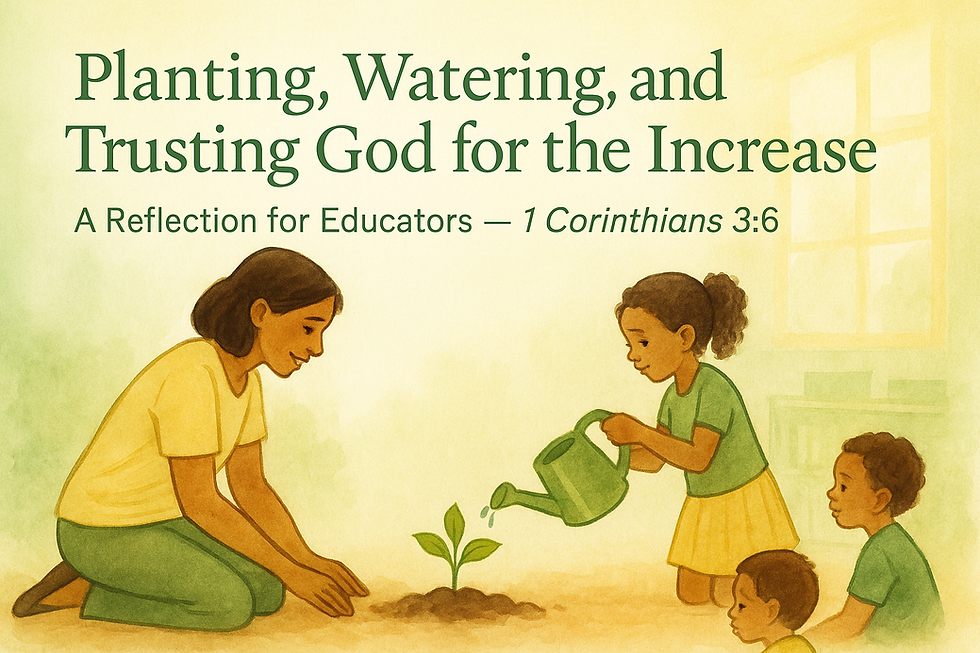From Notes to Nurture: Turning Developmental Information into Growth Opportunities with Auntie Nats
- Natasha Francis-Campbell
- Sep 15
- 3 min read
In early childhood education, we spend a lot of time observing and recording children’s behaviour. However, here’s the truth: those notes and checklists mean very little if they stay tucked away in a file. The real value lies in using the information gathered to shape our teaching, guide our programme planning, and create opportunities that help every child grow.
How do we move from simple observations to meaningful action? Let’s walk through the process.
1. Analyse the Information Collected
First, we need to study what we’ve gathered whether it’s anecdotal notes, checklists, or parent feedback. Patterns begin to emerge. Maybe three children are excelling in reading, while another group struggles with social turn-taking. This analysis gives us a map of where the children are now and where they need to go.
2. Set Developmental Goals
After analysing, we set goals, both individual and group goals. For example:
An individual goal could be helping a child improve pencil grip by the end of the term.
A group goal could be strengthening cooperation skills during playtime.
When goals are clear and achievable, we can measure progress and celebrate success.
3. Adapt the Curriculum and Activities
Children’s needs and interests should guide what we teach. If observations indicate a love for music, include more singing and rhythm in daily lessons. If fine motor development needs strengthening, consider planning activities such as threading, cutting, and working with clay. An adaptable curriculum keeps learning relevant and engaging.
4. Differentiate Instruction
Not all children learn at the same pace. Using gathered information allows us to adjust activities so that every child is supported:
Some children may require simpler tasks and additional support.
Others may be ready for advanced challenges.
Differentiation ensures that no child is left behind while still challenging those who are ready to move forward.
5. Create Individualised Support Plans
Sometimes, the information points to specific challenges. This is when individualised plans become vital. A child with speech delays might need picture-card games, while another with motor challenges may benefit from occupational therapy. Observations guide us to targeted support and specialist referrals when necessary.
6. Inform Daily Routines and Environment Setup
The classroom environment and routines should reflect the needs of children. If children are restless, schedule more outdoor play. If transitions are difficult, add clear cues like songs or countdowns. Even rearranging the classroom can support independence and reduce stress. A responsive environment fosters smoother learning experiences.
7. Strengthen Parent and Community Partnerships
Information gathered isn’t just for teachers; it should be shared with parents. When parents are aware of what’s happening, they can reinforce learning at home with simple activities, such as sorting laundry for classification or reading bedtime stories. Partnerships strengthen and become more consistent.
8. Evaluate and Reflect
Finally, we circle back. Did the child improve? Did the activities meet the goals? Reflection helps us refine strategies and stay responsive to children’s changing needs. In this way, the cycle of observation, planning, and reflection never ends with the child.
Observation is not busywork; it’s a powerful tool. When we turn notes into action, we help children discover their strengths, overcome challenges, and move closer to their full potential. The classroom becomes more than just a place of learning and becomes a launchpad for lifelong growth.
Share this blog with a colleague.



Comments